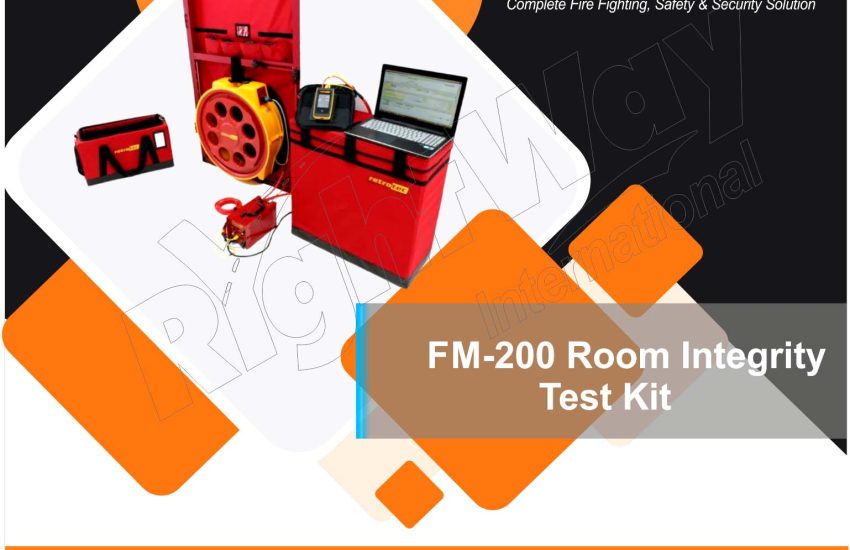The FM-200 Room Integrity Test Kit serves as a crucial tool for evaluating the effectiveness of fire suppression systems that use FM-200 clean agent. This kit helps determine whether a protected area can maintain the required concentration of the fire suppression agent for an adequate duration during a fire event. Below, we explore its components, functions, and significance in fire safety.
What is an FM-200 Room Integrity Test Kit?
A room integrity test kit consists of specialized equipment that measures the air tightness of a room or enclosure housing an FM-200 fire suppression system.” The goal is to ensure that the room can contain the agent long enough to suppress a fire effectively.
Key Components of the FM-200 Room Integrity Test Kit
Smoke Generation Device
This device is used to visualize airflow and identify leaks within the room. It produces non-toxic smoke, helping assess the integrity of the enclosure.
Pressure Measurement Device
Instruments such as manometers or pressure gauges measure the pressure changes within the room, indicating how well the enclosure holds the FM-200 agent.
Data Logging Equipment
These tools record and analyze data collected during the integrity test, allowing for comprehensive assessment and documentation.
Key Functions of the FM-200 Room Integrity Test Kit
Leak Detection
The kit helps identify any leaks or weaknesses in the room’s construction, ensuring that the system effectively contains the FM-200 agent.
Compliance Verification
Regular integrity testing is often required to meet fire safety regulations and standards, making the kit essential for compliance.
System Optimization
By identifying potential issues, the test kit allows for improvements to be made to the room’s design or sealing, optimizing the performance of the fire suppression system.
Importance of the Room Integrity Test Kit
Enhanced Fire Protection
Ensuring that the protected area can maintain the required concentration of FM-200 is crucial for effective fire suppression.
Risk Mitigation
Regular integrity testing helps mitigate risks associated with potential leaks, ensuring the fire suppression system operates as intended during an emergency.
Documentation and Reporting
The testing process generates valuable documentation that teams can use for audits, inspections, and compliance with safety regulations.
Maintenance Considerations
Calibration
Regularly calibrate measurement devices for accuracy to provide reliable results during integrity tests.
Equipment Care
Maintain the smoke generation device and other components in good working condition to ensure effective testing.
Regular Testing Schedule
Establish a routine for integrity testing to ensure ongoing compliance and system effectiveness.
Conclusion
The room integrity test kit is a vital tool for assessing the effectiveness of fire suppression systems. By ensuring that protected areas can maintain the necessary concentration of FM-200, organizations can enhance their fire safety measures and better protect valuable assets from fire hazards.


